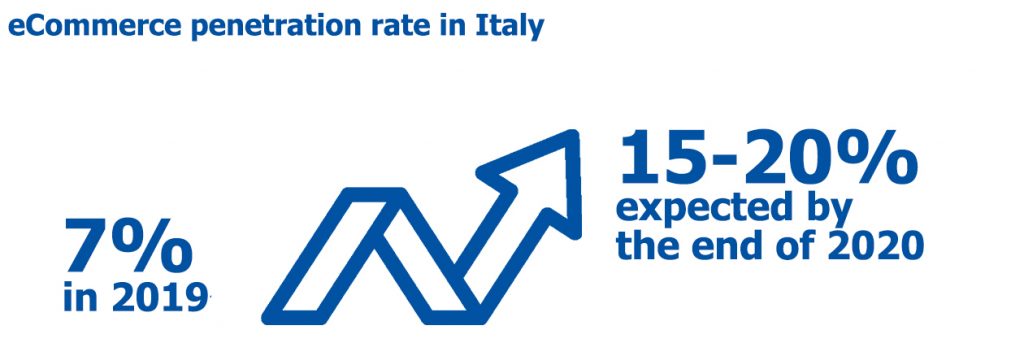The eCommerce that helps
Due to the lockdown phase, the Italian people have approached the digital world for various needs: some of them for work reasons, with the phenomenon of smartworking, and others for leisure to spend their time between a video call, a streaming movie and a tutorial on Youtube. Even the youngest ones were involved with the start of online teaching.
However, the real boom in this period was recorded for the eCommerce, which also touched previously unexplored sectors such as online shopping. According to the Netcomm Consortium, 2 million new consumers have approached the world of web shopping for the first time. An impressive figure if we consider that they were 700,000 in the same period last year. But big eCommerce brands such as Amazon, Alibaba and eBay have been joined by new ones. These are the small neighborhood shops and the artisans who, with closed shutters, have been able to reinvent themselves. For many traders, even among many difficulties, job has never stopped thanks to digital technology. According to #RestartItalia research conducted by Wwworkers, for about 70% of entrepreneurs internet was a fundamental means to keep on working.
From accessory to central strategy
In two months, the rush of small stores to online tools has been impressive. This conversion involved not only the creation of eCommerce, but also the activation of messaging services via Whatsapp or Telegram (32%) and activity on social networks (87%). This is a market born from an emergency which, according to statistics, is meant to grow.

Actually, in Italy the penetration rate of eCommerce was around 7% in 2019 but by the end of this year research estimates this rate to be 15-20%. Moreover, the traders’ openness towards these instruments grows and, at the same time, the confidence of consumers towards online purchases increases too. eCommerce has therefore literally saved thousands of small craftsmen. It is likely that once the emergency is over, it will continue to provide support to traditional sales channels, reaching an ever wider and physically more distant audience.
Opportunities that arise from the emergency
This transformation will also require a rethinking of the entire distribution chain. In addition to a reassessment of communication strategies, an innovation in the logistics network will have to be pursued. From this point of view, a strong integration between online and offline will be necessary. How to make it? Through the activation of new services such as click&collect and, above all, the proximity deliveries. In this way, the neighborhood stores will continue to survive, returning to play their role of community service. That’s not only a rediscovery of small businesses, but also a concrete support to citizens with the creation of new bonds within the neighborhoods.
Data sources:
Netcomm
www.larepubblica.it
www.greenme.it
www.wired.it